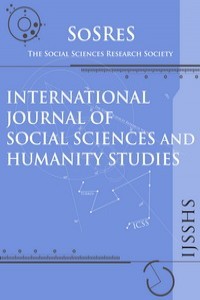AUGMENTED REALITY AS AN EXCITING ONLINE EXPERIENCE: IS IT REALLY BENEFICIAL FOR BRANDS?
AUGMENTED REALITY AS AN EXCITING ONLINE EXPERIENCE: IS IT REALLY BENEFICIAL FOR BRANDS?
___
- ABI Research (2009), ABI Research Anticipates “Dramatic Growth” for Augmented
- http://www.abiresearch.com [Accessed: 12 February 2010]. via Smartphones.2009, Available
- from: Azuma,R.T (1997). “A Survey of Augmented Reality”. In Presence: Teleoperators and Virtual Environments, Vol 6(4),pp. 355-385.
- Benjamin, Kim (2009). “Battle of the Brands”. Revolution, December, pp.41-43.
- Bulearca, M. and Tamarjan, D (2010). “Augmented Reality: A Sustainable Marketing Tool?”, Global Business and Management Research: An International Journal, 2(2&3), pp. 237-252).
- Byers, P.G. and Wilcox, J.R (1991). “Focus Groups: A Qualitative Opportunity For Researchers”, The Journal of Business Communication, Vol: 28(1), pp. 63-78. Chou, H. J (2009). “The Effect of Experiential and Relationship Marketing On Customer Value: A Case Study of International American Casual Dining Chains In Taiwan”, Social Behavior and Personality, Vol 37(7), pp. 993-1008.
- Farhad, M.,( 2009). Augmented Reality Swoops In, Fast Company, 140. Available from Business Source Complete. Available from: www.ebscohost.com [Accessed: 11 February 2010].
- Grigorovici, Dan. M. and Constantin Corina. D (2004). “Experiencing Interactive Advertising Beyond Rich Media: Impacts of Ad Type and Presence on Brand Effectiveness In 3D Gaming Immersive Virtual Environments”, Journal of Interactive Advertising, Vol 5(1), pp.22-36.
- Haller, M., Billinghurst, M. and Thomas, B (2007). Emerging Technologies of Augmented Reality: Interfaces and Design.Idea Group Publishing, 2007.
- Henrysson, A (2007).” Bringing Augmented Reality to Mobile Phones”, Linköping Studies in Science and Technology, Dissertations, , No: 1145.
- Krevelen, Van D.W.F and Poelman, R (2010). “A Survey of Augmented Reality Technologies, Applications and Limitations”. The International Journal of Virtual Reality,Vol 9(2), pp.1-20.
- Kroeker, K (2010). “Mainstreaming Augmented Reality”. Communications of The ACM, Vol 53(7), pp. 19-21.
- Li,H., Daugherty, T. and Biocca (2001), F. “Characteristics of Virtual Experience In Electronic Commerce: A Protocol Analysis”, Journal of Interactive Marketing, Vol 15(3), pp. 13-30. Martin, Ken and Todorov, Ivan (2010). “How Will Digital Platforms Be Harnessed In 2010, and How They Will Change The Way people Interact With Brands?”, Journal of Interactive Advertising, Vol 10(2), pp.61-66.
- Mathur, D.C (1971). Naturalistic Philosophies of Experience. 1971,St. Louis, MO: Warren H. Green Inc.
- Owyang, J (2010). “The New Reality Will Be Augmented”, Customer Relationship Management, January, pp. 32-33.
- Rodgers, Shelly and Thorson, Esther (2000). “The Interactive Advertising Model: How Users Perceive and Process Online Ads”. Journal of Interactive Advertising, Vol 1(1), pp.42-61.
- Russel, G. Martha (2009). “A Call for Creativity in New Metrics for Liquid Media”. Journal of Interactive Advertising. Vol 9(2), pp. 1-23.
- Schmitt,B (1999). “Experiential Marketing”. Journal of Marketing Management, Vol 15, pp. 53-67.
- Saxena,Rajan (2009). Marketing Management. The McGraw-Hill Education Private Limited.Fourth Edition.
- Yuan, Y.E and Wu, C.K (2008). “Relationship Among Experiential Marketing, Experiential Value and Customer Satisfaction”, Journal of Hospitality & Tourism Research, Vol 32(3), pp. 387-410.
- Başlangıç: 2009
- Yayıncı: Sosyal Bilimler Araştırmaları Derneği
IMPACT OF USER IT AND INTERNET SKILLS ON ONLINE BANKING, INPUT TO INNOVATIVE BANKING STRATEGIES
Khalaf Taani, Mari'e Hasan Hamed Banykhaled
THE IMAGES OF ANGELS IN IRANIAN ART A Civilization Interaction in a Comparative Study
CONSUMERS’ PERCEPTIONS TOWARDS INTERNATIONAL SUPERMARKET PRIVATE BRAND PRODUCTS
May Chen YAP, David Yoon Kin TONG, Kim Piew LAİ
MERGER AND ACQUISITION IN THE FINANCIAL SERVICES INDUSTRY
Rasa BALVOČİŪTĖ, Solveiga SKUNČİKİENĖ
ALTERNATIVE DISPUTE RESOLUTION IN ISLAMIC FINANCE: RECENT DEVELOPMENT IN MALAYSIA
Jasri Jamal, Nor Aziah Mohd, Kamal Halili
AN APPLICATION OF ROLE IDENTITY THEORY TO FOSTER ACADEMICS CREATIVITY IN A RESEARCH UNIVERSITY
Roziana SHAARİ, Siti Fatimah BAHARİ, Nor Akmar NORDİN, Kamaruzzaman Abdul RAHİM, Azizah RAJAB, Mohd Hairil Faiz HANAFİAH
RIGHT INTENTION, NOT SO RIGHT OUTCOME: ADDRESSING DOMESTIC VIOLENCE THROUGH WOMEN'S CELL
